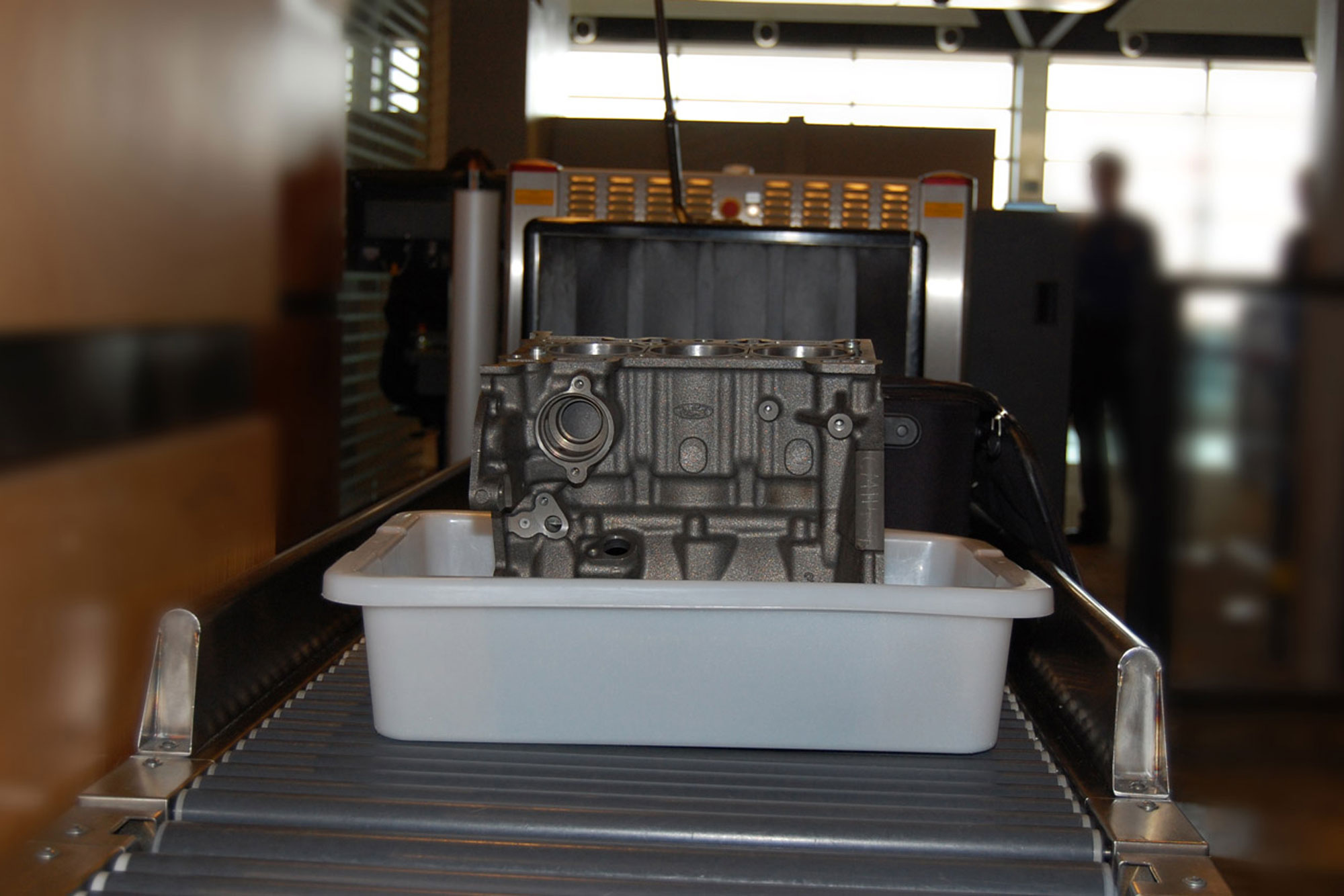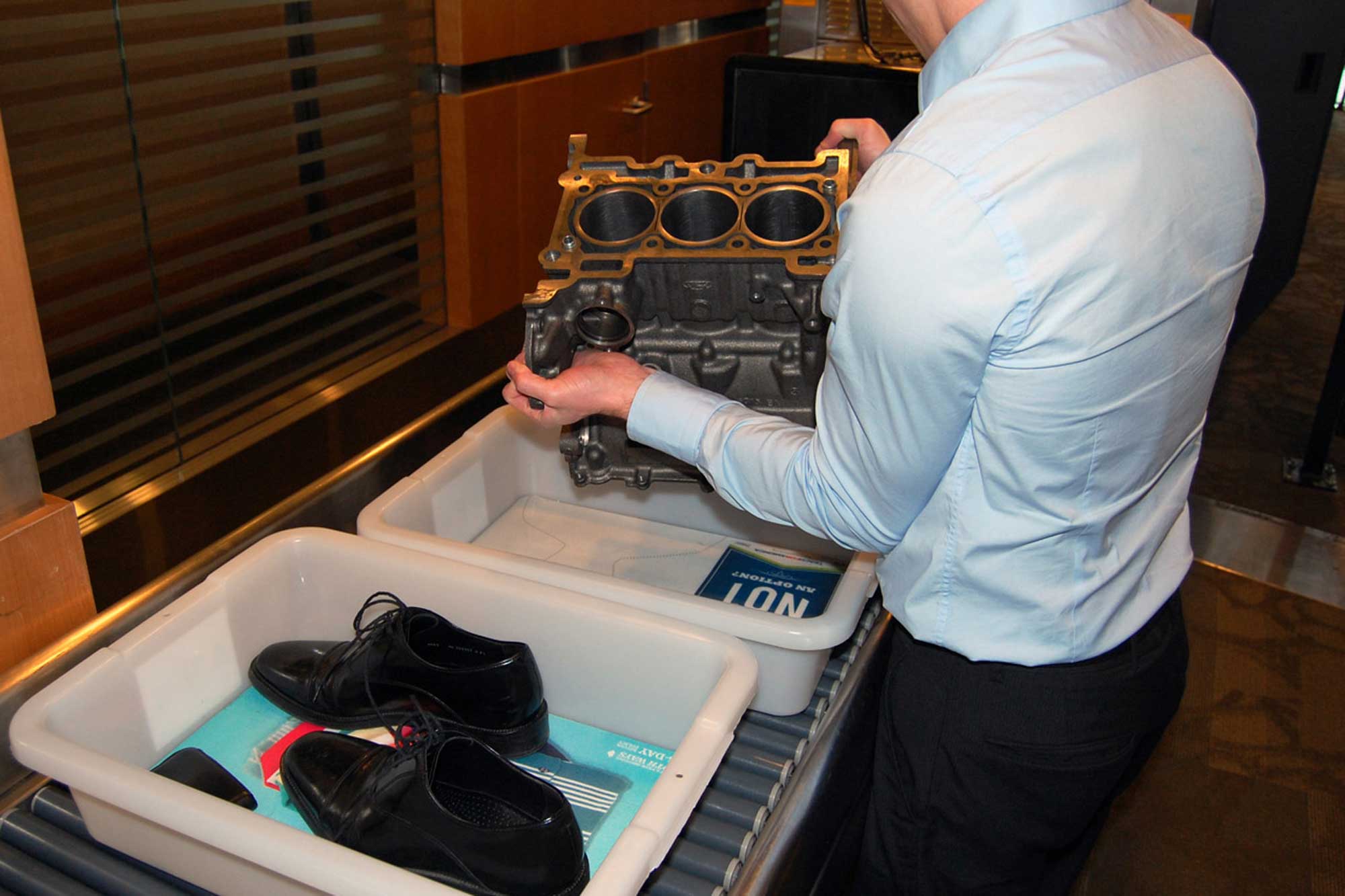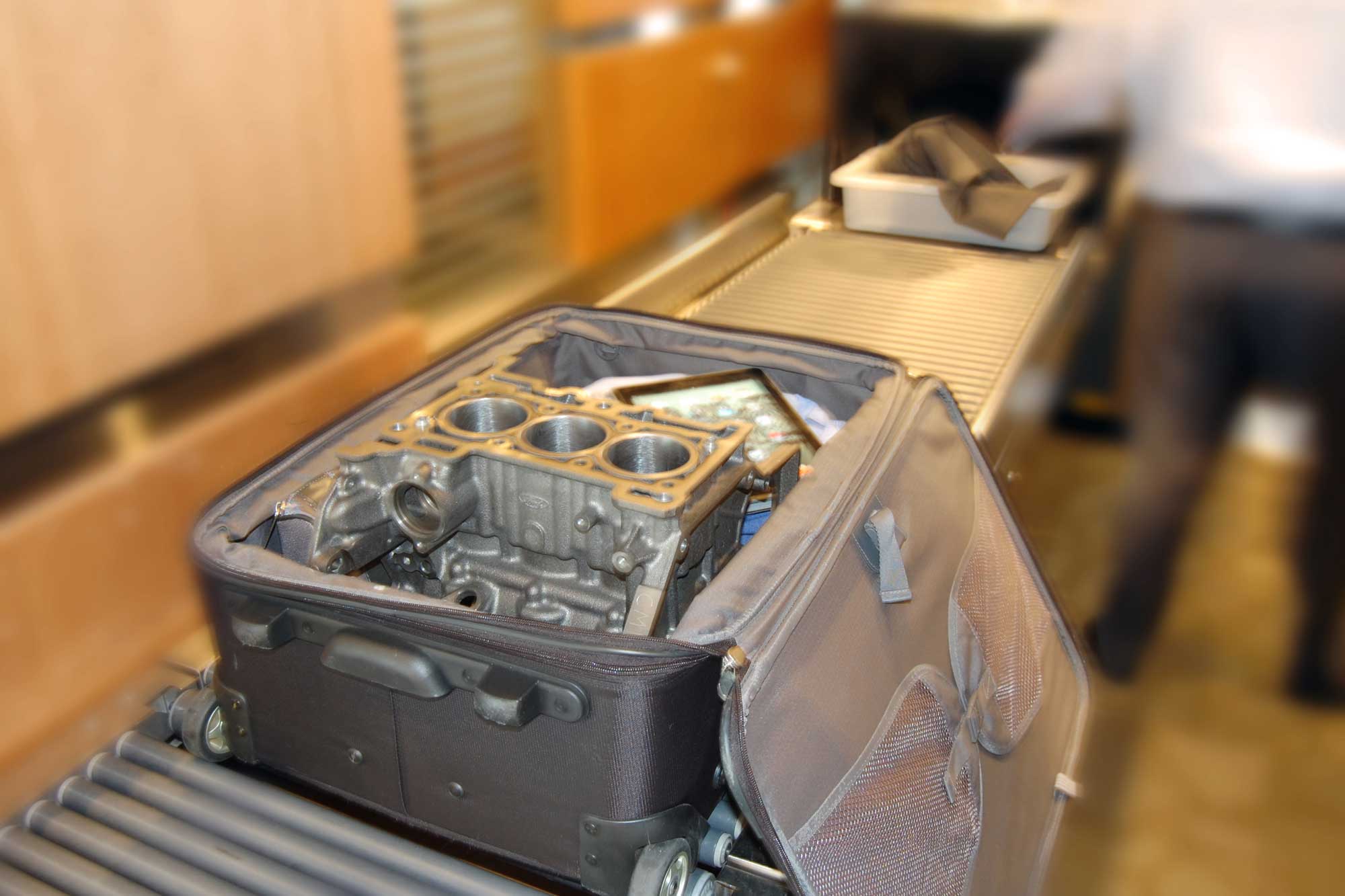Taking a Ford Fiesta Engine Through Airport Security
A silly idea can make big news.
 Craig Daitch
Craig Daitch
In the summer of 2012, I was sitting in my office at Ford Motor Company with several colleagues trying to come up with a worthy public relations stunt for the upcoming 1.0-liter Fiesta. Ford wished to show off its tiny EcoBoost engine at the Los Angeles Auto Show that November, and we needed to get people excited about it. Unlike the legendary Mustang or the tech-packed and pretty Fusion, though, this pint-size car with a pint-size engine didn't inspire ready-made campaigns. How were we to make a big deal out of something small?
Editor's Note: Craig Daitch has spent the majority of his life in and around the automotive industry, including some time working in communications for Ford. This is the untold story behind an irreverent idea that made big headlines with a small engine.
Changing the Perspective of a Small yet Powerful Engine
Back then, whenever consumers in the United States thought about a Ford, they most likely pictured a car with a beastly eight-cylinder with 400-plus-horsepower under the hood and can't-miss 5.0 emblems on the front quarter-panels. And here we were, trying to convince customers to set aside decades of preconceptions and consider a three-cylinder engine with a mere 999 cubic centimeters of displacement. Really?
Yes, really. Fortunately, the engine was rather brilliant. Ford's powertrain engineers had figured out how — with direct injection, turbos, and variable valve timing — to offset the power-to-displacement ratio enough to make the 1.0-liter feel powerful. We were excited about bringing small engines to the U.S. and knew the first step to changing minds was to get people talking.
 Craig Daitch
Craig Daitch
Getting Through TSA With a Car Engine in Tow
We were running out of time, though, and we couldn't agree on a plan. With frustrations growing, I blurted out, "Just give me the engine and I'll put it in my carry-on. We'll figure out something when we land in LA."
Everyone in the room stopped. Our technology communications manager turned to me and said, "C.D., that's a really good idea."
We could show people just how compact and lightweight the engine was with such a stunt, and then, once journalists had the opportunity to report on the engine's prowess, the public might start to rethink the idea that a bigger engine is always better.
And so we went about trying to take a 1.0-liter engine block through airport security. I picked it up from the Ford Livonia Transmission Plant and nestled it into my Samsonite. It fit perfectly.
Next, we thought we should alert the Transportation Security Administration of our plans so no one would detain us when they saw a great hunk of metal emerging from my bag. We emphasized that our objective wasn't to disrupt air travel, and to our relief, TSA had no problem with our scheme. The agents we spoke with were actually fans of Ford and had a sense of humor. They told us to go to the Detroit airport through the Westin hotel entrance at a designated time when traffic would be low.
Everything went off without a hitch, but not without notice. As we walked through security and opened the bag to take photos, all of the TSA agents and onlookers were curious — and dubious that something so small could power a passenger car. We had to assure people that this wasn't a scale model but the real thing.
One TSA member then confessed, "I wouldn't even know what's under my car's hood; I can't remember the last time I opened it."
The statement seemed like a good omen. Perhaps consumers no longer cared about engine size — or, indeed, thought about it all. Maybe Ford could get away with selling this in the U.S. after all.
 Craig Daitch
Craig Daitch
Marketing at the Price of an Airport Parking Pass
The photos and story of the block's flight soon made their way into several major publications, and we took over the buzz ahead of the show — all for little more than the cost of an airport parking pass. It remains my most successful marketing idea, and I've been a part of some interesting stunts.
There was the time at Ford when we gave three musicians sound samples from the Fusion plug-in hybrid electric vehicle to use in techno music for the Movement Electronic Music Festival. When a nearby air museum needed a WWII bomber moved into a hangar, my team at GM volunteered heavy-duty Chevy Silverados for the task. But nothing created as much news as the EcoBoost stunt.
As it turns out, Ford was onto something when it decided to go small. Now, a decade later, we're seeing three-cylinders proliferate in the market (exhibit A: the Toyota GR Corolla). Engineers are pushing the limits of small-displacement engines, and V8s are dropping from lineups without much notice. In fact, if we were to repeat our marketing move today, I can't see it making news. The engine world has changed, and small blocks are everywhere. But I'm glad I got to do this silly stunt back when it could grab the public's attention and preview the next horizon in powertrain technology.
Written by humans.
Edited by humans.
 Craig Daitch
Craig DaitchCraig Daitch is the founder and president of Telemetry, a Detroit-based integrated communications agency that focuses on the intersection between mobility and technology. Having spent the majority of his life working in and around the automotive industry, Craig has amassed a passion for helping car companies uncover and tell not-so-obvious stories about their products that genuinely interest the public. Craig has restored both a 1966 Mustang and a 1969 C10, using his free time to enjoy long drives in his Miata.
Related articles
View more related articles